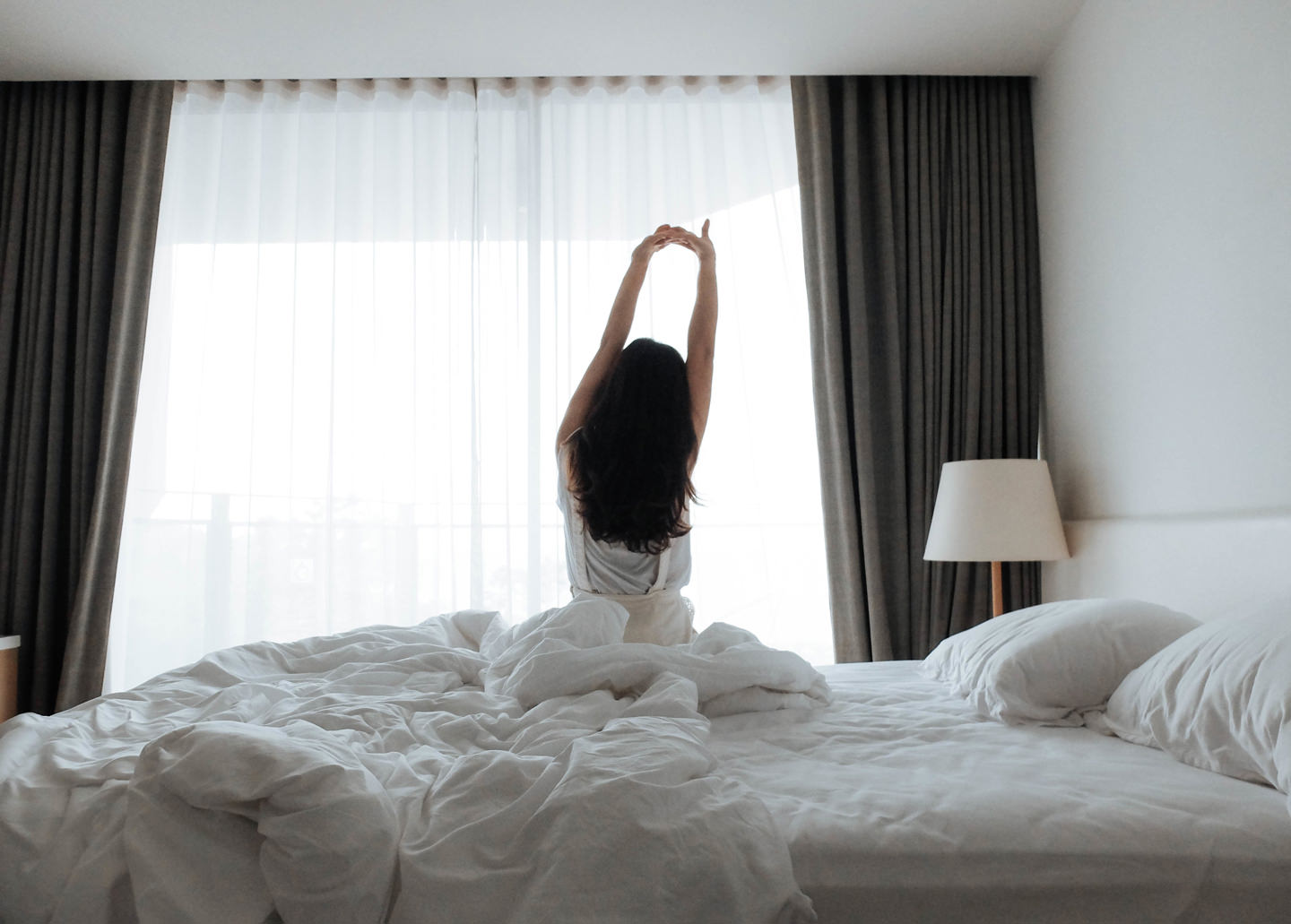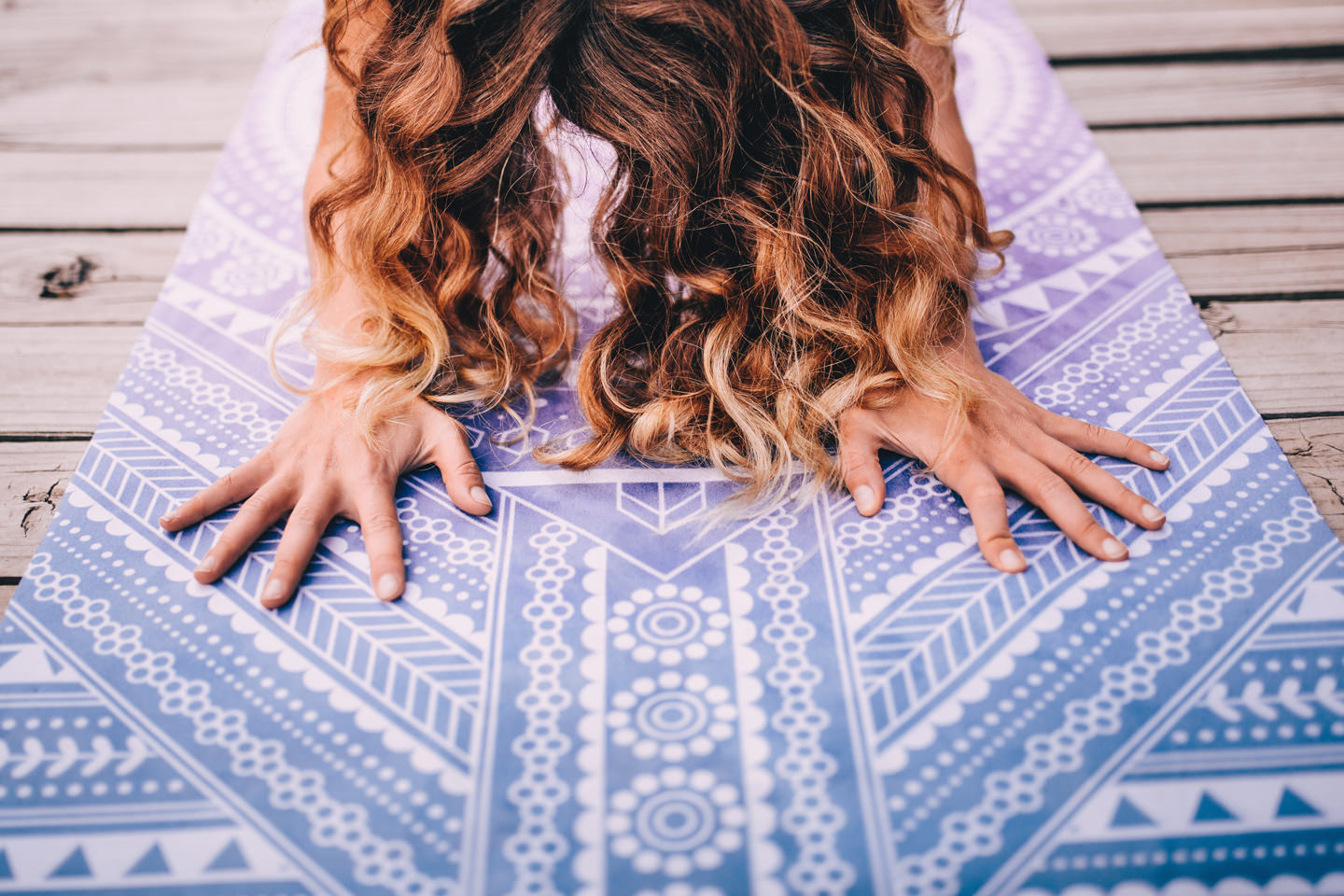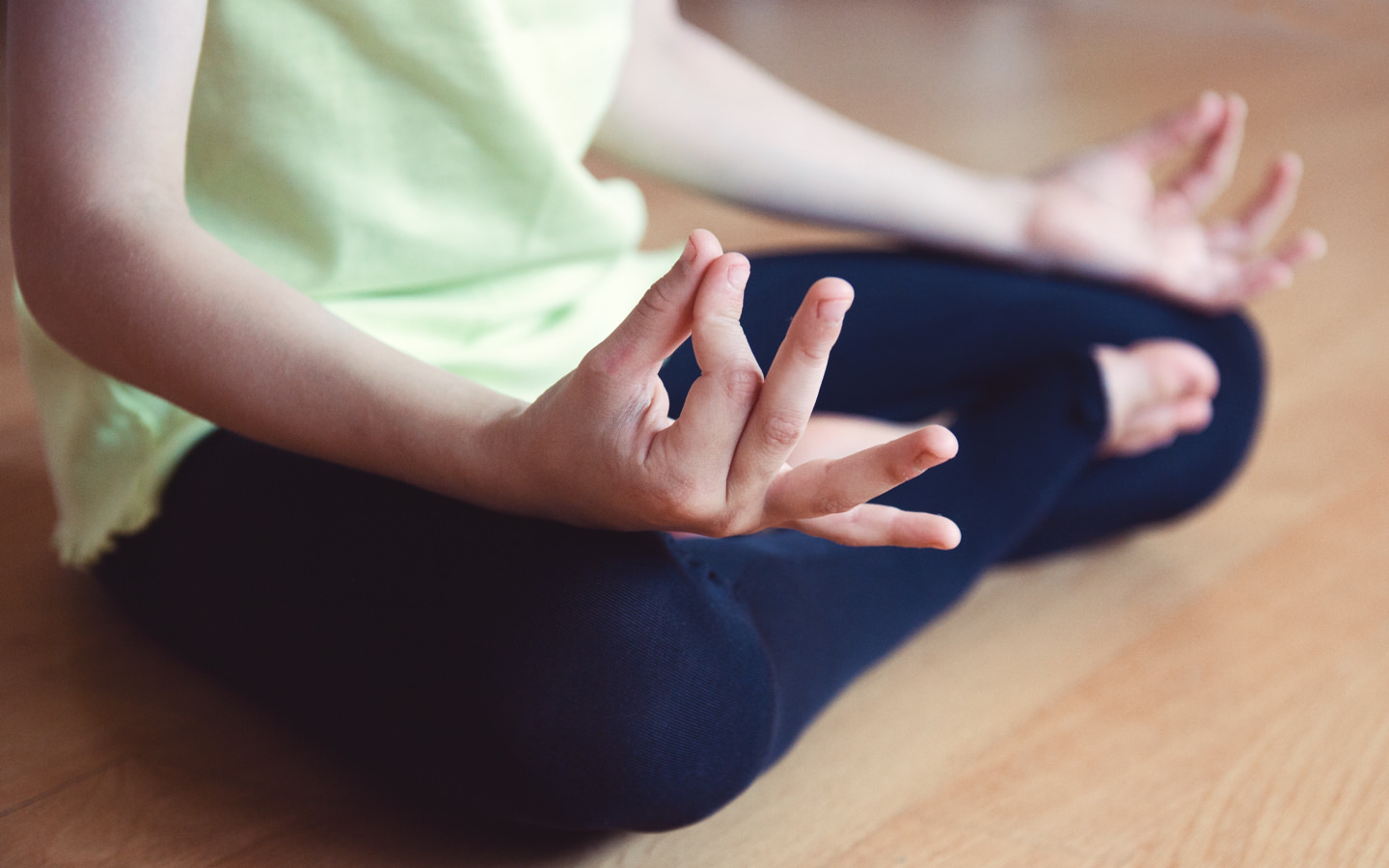60 million Americans are affected by insomnia each year, and it’s an endlessly frustrating problem to have. The vicious cycle leaves you exhausted during the day and wide awake at night, with no measure of rest significant or consistent enough to get your internal clock back on track.
Stress plays a huge role in the reasons why people can’t sleep, and can actually translate into muscle tension and pain if left unaddressed, further complicating getting a good night’s rest.
When you have to get seven to nine hours of shuteye a night, but can’t seem to stop tossing and turning, it’s time to take a different approach to getting the sleep you need to be your best self. Here’s a yoga routine that almost anyone can do that will help prepare your body and mind for sleep every night.

Step 1 — Get Ready for Bed
This seems like an arbitrary and unnecessary step, but most people have a hard time calling it quits on their day. When you make the decision to go to bed, make sure there is no unfinished business standing in your way.
Wash your face, brush your teeth, turn off the lights — whatever you need to do to prepare yourself to get in your bed and stay there without any nagging thoughts pulling you back to consciousness.
Put on what you sleep in, making sure you can adequately bend and stretch in it, dim the lights in your bedroom, and turn on some white noise.
Step 2 — Meditate
Oftentimes, yoga incorporates meditation, but it’s particularly beneficial for a bedtime yoga routine. Sit in a comfortable position on your bed, like a half lotus, resting the backs of your hands on your knees, gently touching your fingertips together, and softly close your eyes, so that only a sliver of light can enter.
Elongate your spine, stretching the top of your head towards your ceiling, and breathe slowly through your nose, not trying to control your breathing, but allowing yourself to simply slow things down a bit.
Spend at least five minutes meditating before beginning your yoga routine, clearing your mind of any lingering thoughts that might still be gnawing at your subconscious. This doesn’t mean addressing worries, it means acknowledging their presence, and then letting them go.
You are not here to plan your morning. You are not here to think about the pile of laundry sitting in the washer. The purpose of meditation at this juncture is to clear your mind and prepare it for sleep, so give this process the time it deserves, and you’ll see better results.
Step 3 — Sukhasana
Ease into this cross-legged pose from your meditation, opening your hips and elongating your spine. Breathe in through your nostrils, feeling your diaphragm fill with air, and release your breath slowly and calmly.
Step 4 — Balasana
Slowly tuck your knees under your body, sitting upright on your heels, and then bend forward, touching your forehead as close as you can to your bed and stretching your arms out as you assume Child’s Pose, or Balasana.
Step 5 — Supta Baddha Konasana
Ease back onto your heels from Balasana and lay on your back with your knees bent. Carefully turn your knees outward, pressing the bottoms of your feet together as you lower your knees to the bed, opening your hips and tucking your shoulders back as you open into the reclining bound angle pose (Supta Baddha Konasana).
Breathe deep, and stay here only for as long as it’s comfortable for you.
Step 6 — Supta Matsyendrasana
Ease out of Supta Baddha Konasana into Savasana (corpse pose) for a moment to relax your inner thighs. Then spread your arms out perpendicularly to your body, turning your head to the left, bend your left knee at a right angle, and bring it over your right thigh as far as you can into Supta Matsyendrasana. Repeat on the other side.
Step 7 — Apanasana
Bring your legs back down to the bed, parallel and straight next to each other. Take a deep breath, bend your knees, and bring them as close as you can to your chest, hugging them with your arms. Ease up on any tension you have in your shoulders and neck, and hold in this position for up to a minute, gently rocking yourself from side to side.
Step 8 — Savasana
Release your legs and allow them to come down to the bed and straighten naturally. Rest your arms comfortably at your sides with your palms facing up, and breathe slowly and calmly as you relax each part of your body, starting with your toes, and ending with your face.

Even if you’re not fully onboard with the concept of meditation, a cluttered mind is going to be the first thing to keep you from sleep. While yoga is certainly a practice in stretching and relaxing your muscles, the breathing exercises incorporated with the poses are also designed to lower your blood pressure, slow your heart rate, and calm your nervous system.
Combining meditation and other mindfulness exercises throughout your day will help your mind and body to handle stress better, and keep you from hanging onto thoughts that are destructive to your mental health and that might keep you from sleep.
Once you embrace that your mind is a big part of how your body feels (and vice versa), you can utilize yoga in the most productive manner possible to dispel the anxiety and stress of the day and take you closer to a restful night’s sleep.
Join us for a little bedtime yoga by striking a pose and tagging us with @avocadomattress or #avocadomattress on Facebook or Instagram.

Shop Pillows
The Essential Organic Pillow Collection
Gentle, breathable, non-toxic support.






